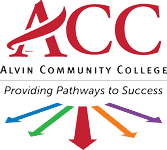Emergency Medical Services (EMS)
Technical Standards
General Job Description
Qualified applicants are expected to meet all admission criteria as well as essential
functions. Students requesting reasonable accommodations to meet these criteria must
inform the Program Director in writing of the need for accommodations at the time
of admission. The student is expected to contact the ADA counselor in the new ESC
(Enrollment Services Center) to file the appropriate forms documenting the need for
accommodations.
|
Functional |
Representative Activity/Attribute |
Examples |
|
Gross Motor Skills |
|
Function in a mobile environment: move about in an ambulance in order to perform procedures on the patient. Must also read patient chart, equipment settings, and/or equipment displays. Sit to record findings. Change equipment settings above head and below waist, plug electrical appliance into wall outlets. |
| Fine Motor Skills |
|
Lift medication vials to eyes to read. Squeeze medication vials to empty. Grasp hold and read small instruments such as volume measuring devices. Write in patient chart. Record patient data in record. Change settings on equipment by turning knob and observing change. |
| Physical Endurance |
|
Stand and perform repetitive procedure(s) on patients such as Chest Physical Therapy and CPR. Repeat this procedure periodically throughout a 12- to 24-hour shift. |
| Physical Strength |
|
Assist patient from bed to chair. Hoist patient up in bed. Move patient from stretcher to bed and back. Carry medications, pulse oximeter, stethoscope or other equipment to various locations. Push ventilator or other heavy equipment ambulance to patient and vice versa. Move other equipment such as Pulse Oximeter, IPPB or IPV machine. Lift equipment from bed height to shelf height above chest level. |
| Critical Thinking | Sufficient for emergency medical judgment | Make independent judgments in a physician’s absence. Determine treatment priorities. Make quick life-saving decisions. |
| Interpersonal |
Sufficient to interact with individuals, families and groups from a variety of social, emotional, cultural, and intellectual backgrounds |
Life and death situations. Family stress of patient’s illness. Peer stress from critical incident. Cultural diversity in reactions to illness or injury. |
| Communication | Sufficient for interaction with others in verbal and written form | Radio report of patient condition. Comprehensive written reports of patient condition and treatment. Verbal report to other health care providers. |
|
Mobility |
|
Work in natural and man-made disasters. Move patients from incident to safety. |
| Hearing |
|
Auscultation of breath sounds. Converse with patient. Work around loud equipment and on roadway. Hear radio transmissions and pager tones. Talk on telephone. |
| Reading | Read and understand written documents | Read and interpret physician orders, physician, therapist and nurses notes. Read from a computer monitor screen. Gather data reasonably accurate, and in a reasonable amount of time to ensure safe and effective patient care relative to other care givers. |
| Math Competence |
|
Read and interpret patient graphics charts and graphic displays. Perform basic arithmetic functions in order to calculate dosages, weights, and other measurements. |
| Emotional Stability |
|
Provide for safe patient care despite a rapidly changing and intensely emotional environment. Perform multiple tasks concurrently, example: delivery of medication or oxygen in one room while performing an arterial blood gas in another such as in an emergency room environment. Maintain enough composure to provide for safe and effective patient care despite crisis circumstances. |
| Analytical Thinking |
|
Evaluate different sources of diagnostic information to help arrive at a patient diagnosis. Evaluate priorities in order to provide for the most appropriate care. Appropriately evaluate data in order to notify physician and nursing when necessary. |
| Vision |
Sufficient to:
|
Reading and writing reports. Visualize mechanism of injury in relation to patient’s condition. Describe size and shape of wound. Describe patient’s skin color. |
| Tactile |
Sufficient for physical assessment. |
Perform palpation |
| Environmental Adjustment | Ability to provide patient care in a variety of locations and conditions. | Deliver patient care in all weather conditions, in water, mud, roadways, fields, buildings, high and low elevations, in hot or cold air temperatures. |
| Concentration | Concentrate on details with moderate to severe amount of interruptions |
|
COLLEGE & CAREER PATHWAYS
Emergency Medical Services is part of our Health Career Pathway. Click the box below to see other Health programs that may interest you.

